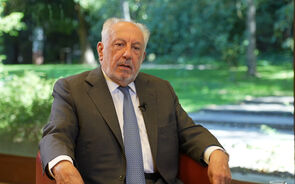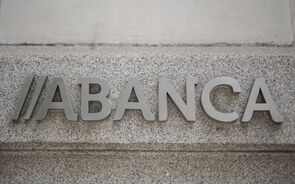Troubled by the Talk of a New Bubble" , Cramer
3 mensagens
|Página 1 de 1
Olá Pataroca morena  (devia haver um icon para qdo estamos a morrer de inveja)...
(devia haver um icon para qdo estamos a morrer de inveja)...
bem vinda de novo... já vi que arrumáste a casa (puseste as cotações no sítio)... sabes que qdo os "gajos" tomam conta das coisas, a casa fica toda desarrumada .
.
Bom regresso e beijocas
Nunofaustino
bem vinda de novo... já vi que arrumáste a casa (puseste as cotações no sítio)... sabes que qdo os "gajos" tomam conta das coisas, a casa fica toda desarrumada
Bom regresso e beijocas
Nunofaustino
Pluricanal... não obrigado. Serviço péssimo e enganador!!!
Troubled by the Talk of a New Bubble" , Cramer
Troubled by the Talk of a New Bubble"
By James J. Cramer
RealMoney Columnist
2/25/2004 8:12 AM EST[/b]
Bubble talk's back. But is the bubble back?
Every day I hear people talk about the resumption of the bubble. It seemed
to start with InterActiveCorp (IACI:Nasdaq - commentary - research) CEO
Barry Diller, who pronounced the bubble alive and well.
Since then, in a matter of weeks, it's been taken as gospel that we are back
to bubble investing, as commentator after commentator either brings it up or
casually accepts the logic.
I find that troubling. I spend all day dividing earnings per share into
stock prices in an attempt to determine what people are paying, will pay and
have paid for stocks. It is comparison shopping, just like you'd do at the
supermarket or at car dealers.
I am, to be pedantic, stuck with the material I must work with.
That material is many things, but it is not bubblicious. I can recall paying
60 times earnings for Microsoft (MSFT:Nasdaq - commentary - research) a
couple of years ago. Now I'm paying 21 times earnings. General Electric
(GE:NYSE - commentary - research) easily fetched 40 times earnings during
the heyday of Jack Welch; now it's struggling to get a high-teens multiple.
The estimates for Broadcom (BRCM:Nasdaq - commentary - research), a prime
bubble target, are for $1.45 to 1.50. Shouldn't you have to pay 25 times for
the fastest grower out there? Is that unreasonable?
How about Intel (INTC:Nasdaq - commentary - research)? If it earns $1.25 a
share, should we be pulling our hair out if we pay 25 times for the premier
semiconductor company in the world with a great balance sheet, a commanding
lead over others, an exciting product line and dramatically rising yields?
Hewlett-Packard (HPQ:NYSE - commentary - research) and IBM (IBM:NYSE -
commentary - research) hardly get growth multiples at all but are in growth
phases.
How about the drugs? The drug multiple, which at times has been twice or
even three times the market, is now roughly at or below the market, even
though these companies could be huge beneficiaries of the Medicare plan.
Or how about the telcos? Verizon (VZ:NYSE - commentary - research),
BellSouth (BLS:NYSE - commentary - research) and SBC Communications
(SBC:NYSE - commentary - research) trade at multiples that make you think
they won't exist five years from now. Maybe they won't, but they aren't
expensive.
I mention these three areas -- tech, telecom and drugs -- because at the
point of greatest inflation for the bubble, you didn't even blink to pay 50,
60, even 80 times for the fastest growers in these three sectors.
That's not to say there aren't pockets of overvaluation. If Amazon
(AMZN:Nasdaq - commentary - research) is just a retailer, by golly, it
should get the multiple of a Best Buy (BBY:NYSE - commentary - research) or
a Lowe's (LOW:NYSE - commentary - research), not the one it sports now.
eBay (EBAY:Nasdaq - commentary - research)? Momentum. Yahoo! (YHOO:Nasdaq -
commentary - research)? Momentum. Netflix (NFLX:Nasdaq - commentary -
research)? Momentum.
Momentum overvaluations are something we have to live with and have lived
with in the past, before the bubble. In fact, if you want to get nitpicky,
Amazon's multiple is due partly to Legg Mason's Bill Miller, who didn't sell
any during its historic run from $7 to $50 and seems only now to be selling.
He was the largest shareholder; blame him! Netflix? That's Fidelity, its
largest holder.
The last time I looked, neither Miller nor Fidelity seemed like bubbleheads.
There are differences between the Millers and the Fidelities and the Januses
and the Invescos, you know. And if you don't know, you haven't looked at the
mutual fund tables for the past half-decade.
Last night I was interviewed by a reporter who grilled me on the bubble
story. I kept asking her to tell me, away from a handful of Internet stocks,
where the bubble was.
The silence suggested either a lack of homework or a lack of caring.
Don't misunderstand me: If we're going to come out of this downturn, we need
many more people to think it is a bubble and to fear it as if it was March
2000.
But I need some more evidence to convict. Right now, no can do. "
(in www.realmoney.com)
By James J. Cramer
RealMoney Columnist
2/25/2004 8:12 AM EST[/b]
Bubble talk's back. But is the bubble back?
Every day I hear people talk about the resumption of the bubble. It seemed
to start with InterActiveCorp (IACI:Nasdaq - commentary - research) CEO
Barry Diller, who pronounced the bubble alive and well.
Since then, in a matter of weeks, it's been taken as gospel that we are back
to bubble investing, as commentator after commentator either brings it up or
casually accepts the logic.
I find that troubling. I spend all day dividing earnings per share into
stock prices in an attempt to determine what people are paying, will pay and
have paid for stocks. It is comparison shopping, just like you'd do at the
supermarket or at car dealers.
I am, to be pedantic, stuck with the material I must work with.
That material is many things, but it is not bubblicious. I can recall paying
60 times earnings for Microsoft (MSFT:Nasdaq - commentary - research) a
couple of years ago. Now I'm paying 21 times earnings. General Electric
(GE:NYSE - commentary - research) easily fetched 40 times earnings during
the heyday of Jack Welch; now it's struggling to get a high-teens multiple.
The estimates for Broadcom (BRCM:Nasdaq - commentary - research), a prime
bubble target, are for $1.45 to 1.50. Shouldn't you have to pay 25 times for
the fastest grower out there? Is that unreasonable?
How about Intel (INTC:Nasdaq - commentary - research)? If it earns $1.25 a
share, should we be pulling our hair out if we pay 25 times for the premier
semiconductor company in the world with a great balance sheet, a commanding
lead over others, an exciting product line and dramatically rising yields?
Hewlett-Packard (HPQ:NYSE - commentary - research) and IBM (IBM:NYSE -
commentary - research) hardly get growth multiples at all but are in growth
phases.
How about the drugs? The drug multiple, which at times has been twice or
even three times the market, is now roughly at or below the market, even
though these companies could be huge beneficiaries of the Medicare plan.
Or how about the telcos? Verizon (VZ:NYSE - commentary - research),
BellSouth (BLS:NYSE - commentary - research) and SBC Communications
(SBC:NYSE - commentary - research) trade at multiples that make you think
they won't exist five years from now. Maybe they won't, but they aren't
expensive.
I mention these three areas -- tech, telecom and drugs -- because at the
point of greatest inflation for the bubble, you didn't even blink to pay 50,
60, even 80 times for the fastest growers in these three sectors.
That's not to say there aren't pockets of overvaluation. If Amazon
(AMZN:Nasdaq - commentary - research) is just a retailer, by golly, it
should get the multiple of a Best Buy (BBY:NYSE - commentary - research) or
a Lowe's (LOW:NYSE - commentary - research), not the one it sports now.
eBay (EBAY:Nasdaq - commentary - research)? Momentum. Yahoo! (YHOO:Nasdaq -
commentary - research)? Momentum. Netflix (NFLX:Nasdaq - commentary -
research)? Momentum.
Momentum overvaluations are something we have to live with and have lived
with in the past, before the bubble. In fact, if you want to get nitpicky,
Amazon's multiple is due partly to Legg Mason's Bill Miller, who didn't sell
any during its historic run from $7 to $50 and seems only now to be selling.
He was the largest shareholder; blame him! Netflix? That's Fidelity, its
largest holder.
The last time I looked, neither Miller nor Fidelity seemed like bubbleheads.
There are differences between the Millers and the Fidelities and the Januses
and the Invescos, you know. And if you don't know, you haven't looked at the
mutual fund tables for the past half-decade.
Last night I was interviewed by a reporter who grilled me on the bubble
story. I kept asking her to tell me, away from a handful of Internet stocks,
where the bubble was.
The silence suggested either a lack of homework or a lack of caring.
Don't misunderstand me: If we're going to come out of this downturn, we need
many more people to think it is a bubble and to fear it as if it was March
2000.
But I need some more evidence to convict. Right now, no can do. "
(in www.realmoney.com)
3 mensagens
|Página 1 de 1
Quem está ligado:
Utilizadores a ver este Fórum: AlfaTrader, GaussSLB47, jcovas77, m-m, malakas, Nightrader, OCTAMA, PAULOJOAO, PXYC, Shimazaki_2, trilhos2006 e 82 visitantes



